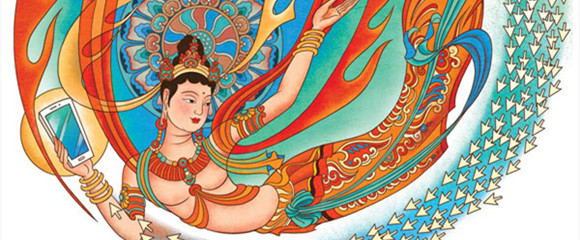Ancient route leads to new opportunities at Silk Road expo
Updated: 2016-05-19 11:08
(Xinhua)
|
|||||||||
XI'AN -- Around 2,000 years ago, camel caravans carried silk, jewelry and spices across Eurasia, crossing deserts and mountains.
Modern transportation networks have replaced the old Silk Road, allowing goods to travel across the Eurasian continent in just days or hours. Yet one Chinese tea company did things the old way, sending staff and goods on a journey from northwest China's Shaanxi Province to Kazakhstan using 136 camels and eight carriages - along with some help from 40 vehicles.
"We chose this unique method to remind people from both China and Kazakhstan about the ancient Silk Road, while promoting our tea products and Chinese tea culture in Kazakhstan at the same time," said Ma Hengguang, CEO of Yize tea company, at the Silk and Road expo in Xi'an, Shaanxi Province.
The Silk Road International Exposition, or the 20th Investment and Trade Forum for Cooperation between East and West China, which started last Friday, attracted more than 105,000 businessmen and 6,200 companies from China and countries along the Silk Road.
"It was through the expo that we started to expand our business in Kazakhstan and other central Asian countries along the Silk Road," Ma said.
The company signed business contracts with several companies from Kazakhstan at the expo two years ago. With the support of local government, Yize decided to transport products by camel and carriage to experience the Silk Road and gain an understanding of the culture along the ancient route.
REVISITING HISTORY
The Silk Road was a series of routes for trade and cultural exchange connecting China and Europe via Central Asia beginning around 100 B.C.
The route flourished during China's Tang Dynasty. The dynasty's capital at Chang'an - today known as Xi'an - hosted envoys from more than 70 countries, as well as foreign merchants and students.
To experience this ancient route, more than 100 Yize employees traveled through snowy mountains and deserts, wearing out hundreds of pairs of shoes until they finally reached Kazakhstan after an 18-month journey.
Since then, they have built a presence in the country.
"We have already established a sales center in Alma-Ata in Kazakhstan, and several local companies have become distributors," said Ma.
The company is building an agricultural technology center, mostly focused on beef and lamb processing. It not only takes advantage of the agricultural potential of Kazakhstan, but provides job opportunities for locals at the same time.
"It's a win-win deal," Ma said.
Next month, the company will organize another camel team to explore more opportunities in Uzbekistan, Kyrgyzstan and Kazakhstan. The team is expected to arrive at Astana, capital city of Kazakhstan, in November.
HUGE POTENTIAL
"Thanks to the Silk Road expo, we have opened our eyes and seen the huge business potential in central Asian countries," said Ma.
At this year's expo, a total of 108 contracts have been signed between companies in Shaanxi Province and foreign companies, with total investment of 184.6 billion yuan (28.3 billion U.S. dollars).
According to statistics from the Ministry of Commerce, trade volume between China and countries along the Belt and Road in 2015 increased 25.1 percent year on year to 995.5 billion U.S. dollars.
Total investment of Chinese enterprises in countries along the route has reached $14.8 billion, with a year-on-year increase of 18.2 percent.
Zhang Xiaoning, deputy secretary-general of Shaanxi government, said that the Silk Road expo is a platform that can encourage more Chinese companies to "go global," adding that markets along the Silk Road have huge potential for Chinese enterprises to discover.
Today's Top News
LinkedIn matches refugees with jobs
Top legislator foresees bright future for SAR
UN climate talks resume to write 'rule book'
Internet regulations: From the US to Australia
Google faces record 3 billion euro antitrust fine
EU lawmakers' rejection of China's MES protectionist
Boris Johnson compares EU to Nazi Germany
China urges EU to honor MES status, despite parliamentary vote
Hot Topics
Lunar probe , China growth forecasts, Emission rules get tougher, China seen through 'colored lens', International board,
Editor's Picks

|

|

|

|

|

|







